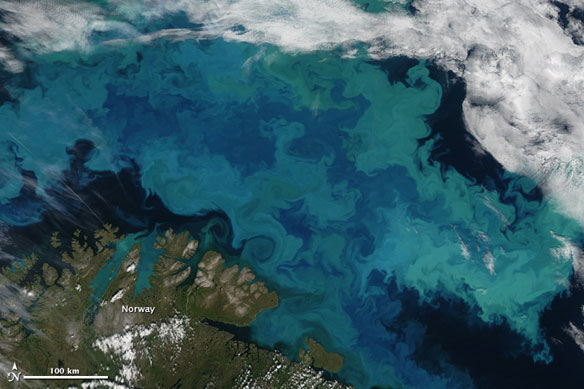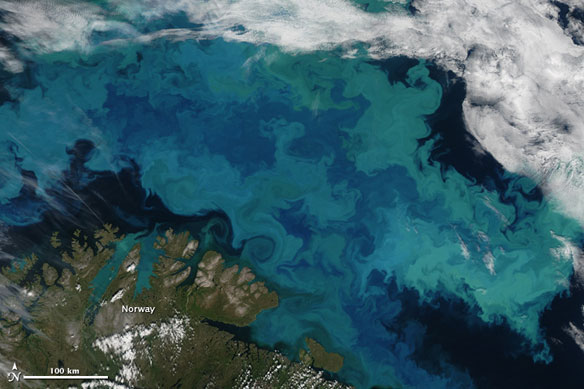
Brilliant shades of blue and green explode across the Barents Sea in this natural-color image. The milky blue color strongly suggests that the bloom contains coccolithophores, microscopic plankton that are plated with white calcium carbonate. When viewed through ocean water, a coccolithophore bloom tends to be bright blue.
Like any other type of phytoplankton, coccolithophores are one-celled marine plants that live in large numbers throughout the upper layers of the ocean. Unlike any other plant in the ocean, coccolithophores surround themselves with a microscopic plating made of limestone (calcite). These scales, known as coccoliths, are shaped like hubcaps and are only three one-thousandths of a millimeter in diameter. The coccolithophores’ short-term effect on the environment is complex. Captions: NASA / Earth Observatory. Image source: NASA / Earth Observatory
Excerpts;
A microscopic marine alga is thriving in the North Atlantic to an extent that defies scientific predictions, suggesting swift environmental change as a result of increased carbon dioxide in the ocean, according to a recent study…
Increased carbon dioxide enhances plankton growth, opposite of what was expected, Science Daily
Coccolithophores’ abundance has increased by an order of magnitude since 1960s as carbon input into ocean waters has increased, significantly changing ocean garden.This finding was diametrically opposed to what scientists had expected. Coccolithophores are often referred to as “canaries in the coal mine.” When the percentage of coccolithophores in the community goes up, the relative abundance of other groups will go down…









